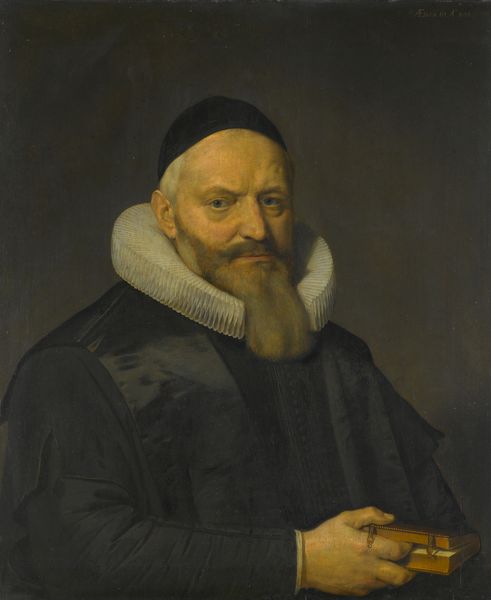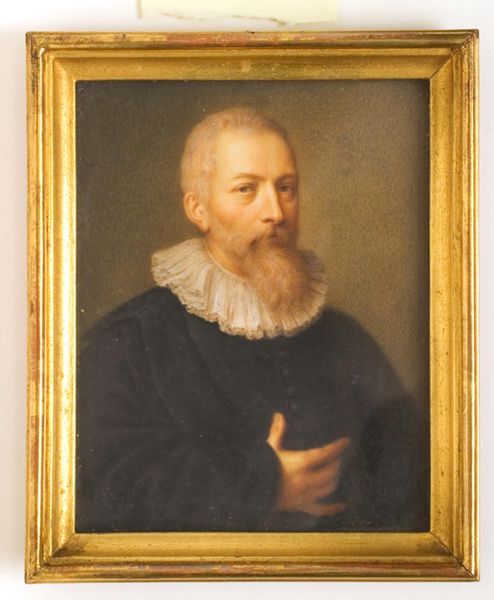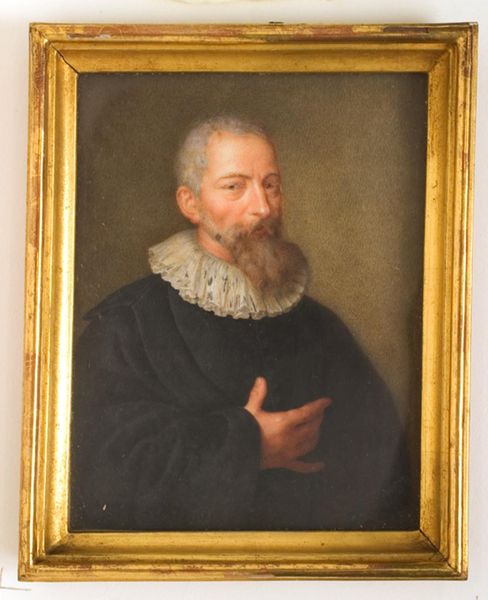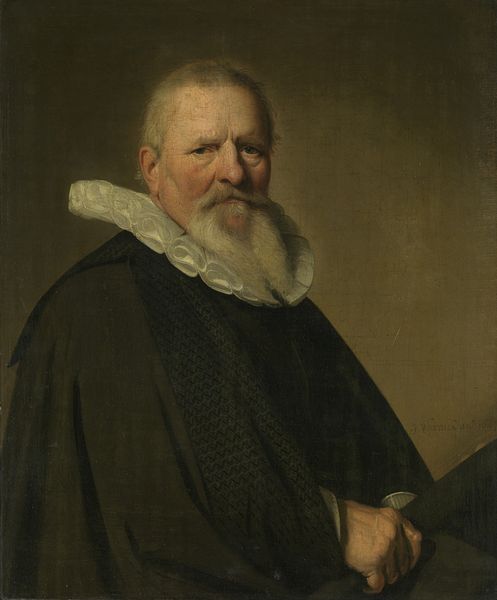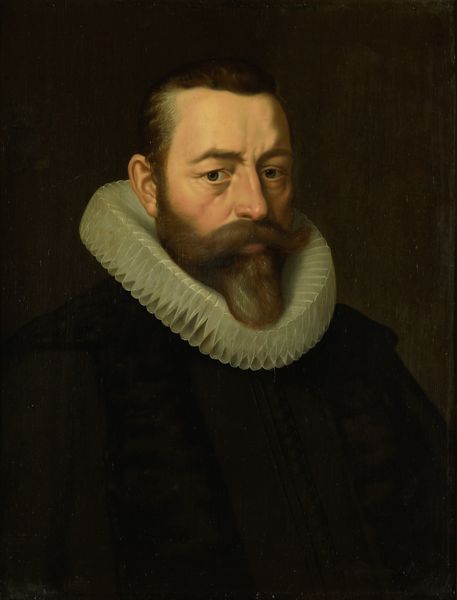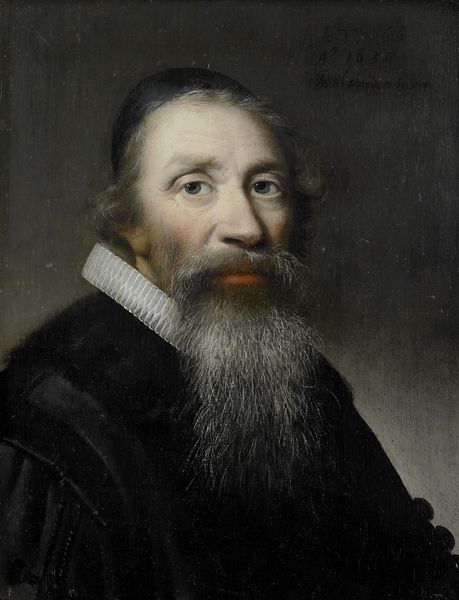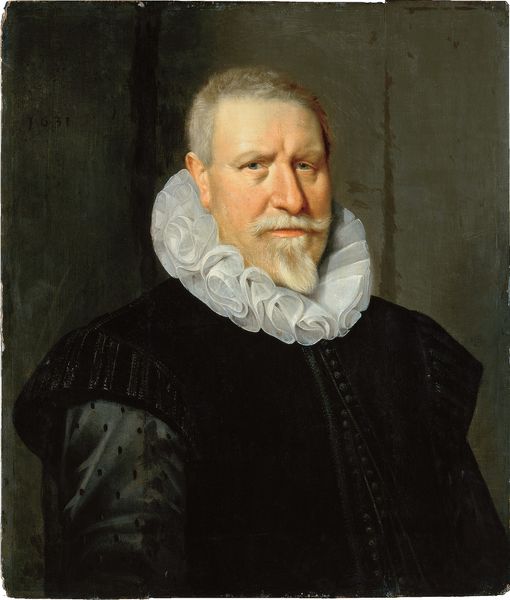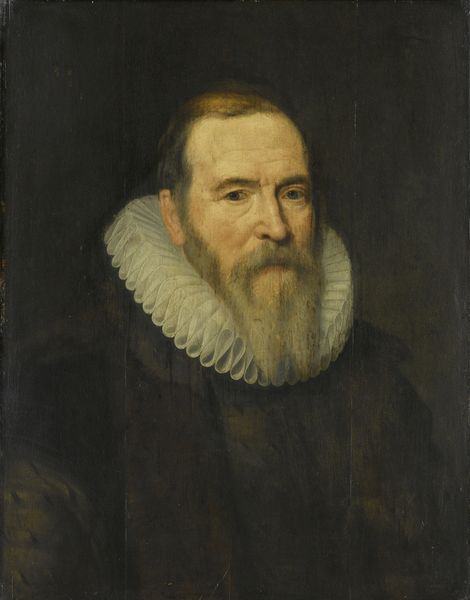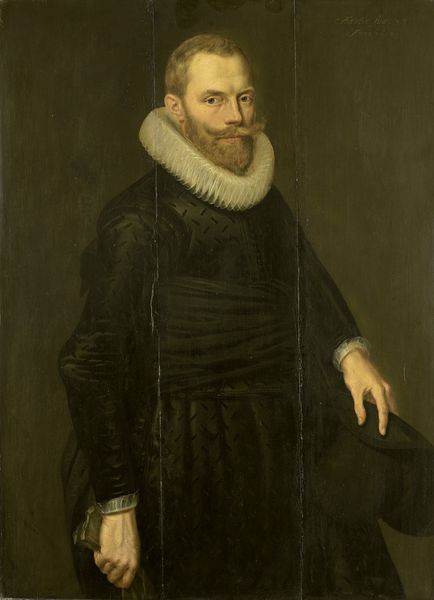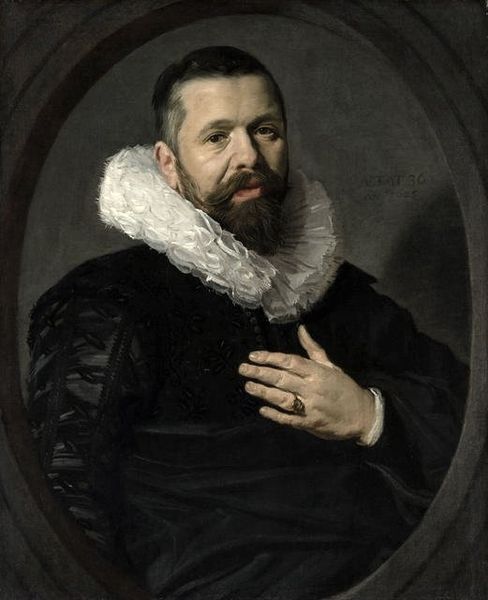
painting, oil-paint
#
portrait
#
baroque
#
painting
#
oil-paint
#
chiaroscuro
#
history-painting
#
academic-art
#
portrait art
#
realism
Dimensions: 72 x 56 cm
Copyright: Public domain
Curator: Here we have Anthony van Dyck's "Portrait of the Artist Marten Pepijn," completed in 1632. Editor: My first thought is that there's such a solemn presence, a real sense of weightiness in the sitter’s expression and bearing. It is also interesting to consider the choice of muted tones, offset by that strikingly bright, meticulously rendered collar. Curator: Absolutely. Van Dyck painted this while he was deeply embedded within courtly circles; his style influenced, and was influenced by, the social structures and the powerful patronage system that governed the art world then. Pepijn, himself an artist, would have been very aware of the political dimensions of having his portrait made by van Dyck. Editor: And look at how van Dyck uses oil paint to evoke texture – the crispness of the ruff, the softness of Pepijn’s beard. Considering the tools available to him and the quality of the raw materials he would be sourcing back then, that immaculate finish is a testament to Van Dyck's labor. The whole thing has such tangible form; one feels as though one could almost reach out and touch the man. Curator: Indeed. The work showcases Van Dyck’s mastery of chiaroscuro, bringing depth and drama to the otherwise formal pose. Remember, portraiture served a vital public role then; it cemented status, suggested affiliations, and constructed identity within strict social boundaries. To be painted by van Dyck carried considerable cachet. Editor: It’s tempting to speculate on the nature of labor involved in creating these items of clothing featured. That ruff, it speaks of intense labor for whoever produced that piece, which would make for a strong, material counterpoint to the sitter. Curator: It is all meticulously thought out and orchestrated. Think of how courtly art became democratized by artworks like these. The public reception and the copies which were generated meant a shift towards different modes of distribution. Editor: Van Dyck has elevated both the status of his contemporary by honoring him with portraiture, as well as giving an insight to future generations into what labor can create. It makes one contemplate the amount of craft that this piece displays. Curator: A beautiful piece of social history rendered through skilled brushwork, definitely worth further consideration. Editor: Precisely, by carefully scrutinizing the work through materials and production process, one may better grasp its innate human worth.
Comments
No comments
Be the first to comment and join the conversation on the ultimate creative platform.
